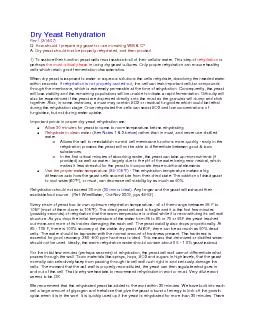PDF-Rev 1 (2/14/07) How should I prepare dry yeast for use in making WM &
Author : ellena-manuel | Published Date : 2015-10-08
is no damage done here if it is not immediately add to the wort You just do not get the added benefit of that sudden burst of energy We also recommend that you attemperate
Presentation Embed Code
Download Presentation
Download Presentation The PPT/PDF document "Rev 1 (2/14/07) How should I prepare dry..." is the property of its rightful owner. Permission is granted to download and print the materials on this website for personal, non-commercial use only, and to display it on your personal computer provided you do not modify the materials and that you retain all copyright notices contained in the materials. By downloading content from our website, you accept the terms of this agreement.
Rev 1 (2/14/07) How should I prepare dry yeast for use in making WM &: Transcript
Download Rules Of Document
"Rev 1 (2/14/07) How should I prepare dry yeast for use in making WM &"The content belongs to its owner. You may download and print it for personal use, without modification, and keep all copyright notices. By downloading, you agree to these terms.
Related Documents














